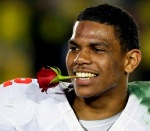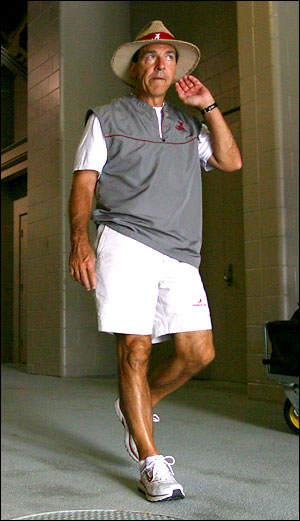Twitter is a social media Web 2.0 application platform that has created an ability to interact like never before. In 140 characters or less, one can give periodic updates on what they are doing at any given point throughout their lives. It creates a system of communication where anyone with an Internet connection can communicate with and learn about the ideas and thoughts of another in real-time by sending “tweets.”

 Facebook is another social media application that also creates a system of communication by allowing one to connect and share with people in their lives through a virtual platform. From posting updates on your wall, sharing photos and videos with friends, to instant messaging, newsfeeds, events, and collaborative gaming with others around the world, Facebook empowers users through a virtual medium that has become ingrained as a way of life for over 600 million people.
Facebook is another social media application that also creates a system of communication by allowing one to connect and share with people in their lives through a virtual platform. From posting updates on your wall, sharing photos and videos with friends, to instant messaging, newsfeeds, events, and collaborative gaming with others around the world, Facebook empowers users through a virtual medium that has become ingrained as a way of life for over 600 million people.
Harnessing the power of social media to reach millions of fans, many college athletes now consistently maintain double lives: one in the physical world and another in the virtual world. For those that can’t make it to their games, they provide first-hand perspectives on what their lives are like as students and athletes, from the adrenaline filled ambience of gameday all the way to their interactions with the media and other classmates around campus. Most have Facebook pages and Twitter accounts and use them readily.
If their lives in the physical world as student/athletes are overseen and perhaps comprised by the NCAA and their governance, shouldn’t college athletes maintain the right to conduct their virtual identities as they please? If they are truly “STUDENTS” first, and athletes second, shouldn’t they be able to use social media such as Facebook and Twitter, just like their classmates, family, and friends do?
 As rumors swirled in late December that Ohio State football players were involved in NCAA violations, OSU quarterback Terrelle Pryor took to the world of social media to claim his innocence, tweeting “I paid for my tattoos. GoBucks.” Yet, the day later, he and several of his teammates were suspended for the first five games of the 2011 season for selling awards, gifts and university apparel and receiving improper benefits.
As rumors swirled in late December that Ohio State football players were involved in NCAA violations, OSU quarterback Terrelle Pryor took to the world of social media to claim his innocence, tweeting “I paid for my tattoos. GoBucks.” Yet, the day later, he and several of his teammates were suspended for the first five games of the 2011 season for selling awards, gifts and university apparel and receiving improper benefits.

Fearing that his tweet might receive unfavorable attention from his coaches, the NCAA, and others, he quickly moved to delete the post. The NCAA has made its stance on this issue public and clearly demonstrated that they will also intervene in the virtual world, very similar to the physical world.
This incident is only the tip of the iceberg.  The next major obstacle will occur when beauty enters into the equation. In a nation where sex appeal equates mass marketing opportunities, hence potential dollars in the pockets of athletes, and, of course, additional intervention by the NCAA, will athletes who possess sex appeal be able to profit off of their identities in the virtual world, or will they receive further scrutiny for their use of social media?
The next major obstacle will occur when beauty enters into the equation. In a nation where sex appeal equates mass marketing opportunities, hence potential dollars in the pockets of athletes, and, of course, additional intervention by the NCAA, will athletes who possess sex appeal be able to profit off of their identities in the virtual world, or will they receive further scrutiny for their use of social media?
Skylar Diggins, an exceptionally attractive athlete on the Notre Dame women’s college basketball team, is just one example where sex appeal could be leveraged.  After her team made it to the semi-finals in the NCAA women’s college basketball tournament, she dropped 28 points and six assists on the heavily-favored Connecticut Huskies, sending the Fighting Irish to the national championship game against the Texas A&M Aggies. Subsequently, her name has become a household one. According to Yahoo!, her Twitter follower count jumped from 6000 to more than 56000 since the tournament began and searches for her name jumped 2700 percent following the game. Also, rap superstar Lil’ Wayne sent her a Twitter tweet personally, stating, “”Good lukk to my wife Skylar Diggins and the Fighting Irish.”
After her team made it to the semi-finals in the NCAA women’s college basketball tournament, she dropped 28 points and six assists on the heavily-favored Connecticut Huskies, sending the Fighting Irish to the national championship game against the Texas A&M Aggies. Subsequently, her name has become a household one. According to Yahoo!, her Twitter follower count jumped from 6000 to more than 56000 since the tournament began and searches for her name jumped 2700 percent following the game. Also, rap superstar Lil’ Wayne sent her a Twitter tweet personally, stating, “”Good lukk to my wife Skylar Diggins and the Fighting Irish.”
One can only imagine how many opportunities she will have, now that her name is indeed a household one, since bursting onto the national scene due to her athletic prowess and sexual appeal.  Perhaps only time possesses the answer to the former question; yet, given recent trends, it seems as if things may stay the same and somehow, some way, form or fashion, digital age athletes will see these opportunties readily come available and subsequently become under investigation by the NCAA.
Perhaps only time possesses the answer to the former question; yet, given recent trends, it seems as if things may stay the same and somehow, some way, form or fashion, digital age athletes will see these opportunties readily come available and subsequently become under investigation by the NCAA.
Let’s hope that the NCAA begins to think outside of the box sooner than later, before more and more of these sort of “issues” emerge. They should create policy that allows athletes to be athletes while they are at “work” and permits them to leverage their freedom of speech via social media in their spare time as students and Americans. If they stand to profit from their endeavors, God-given talent, abilities, and even beauty, then that’s nobody’s business but their’s.




















